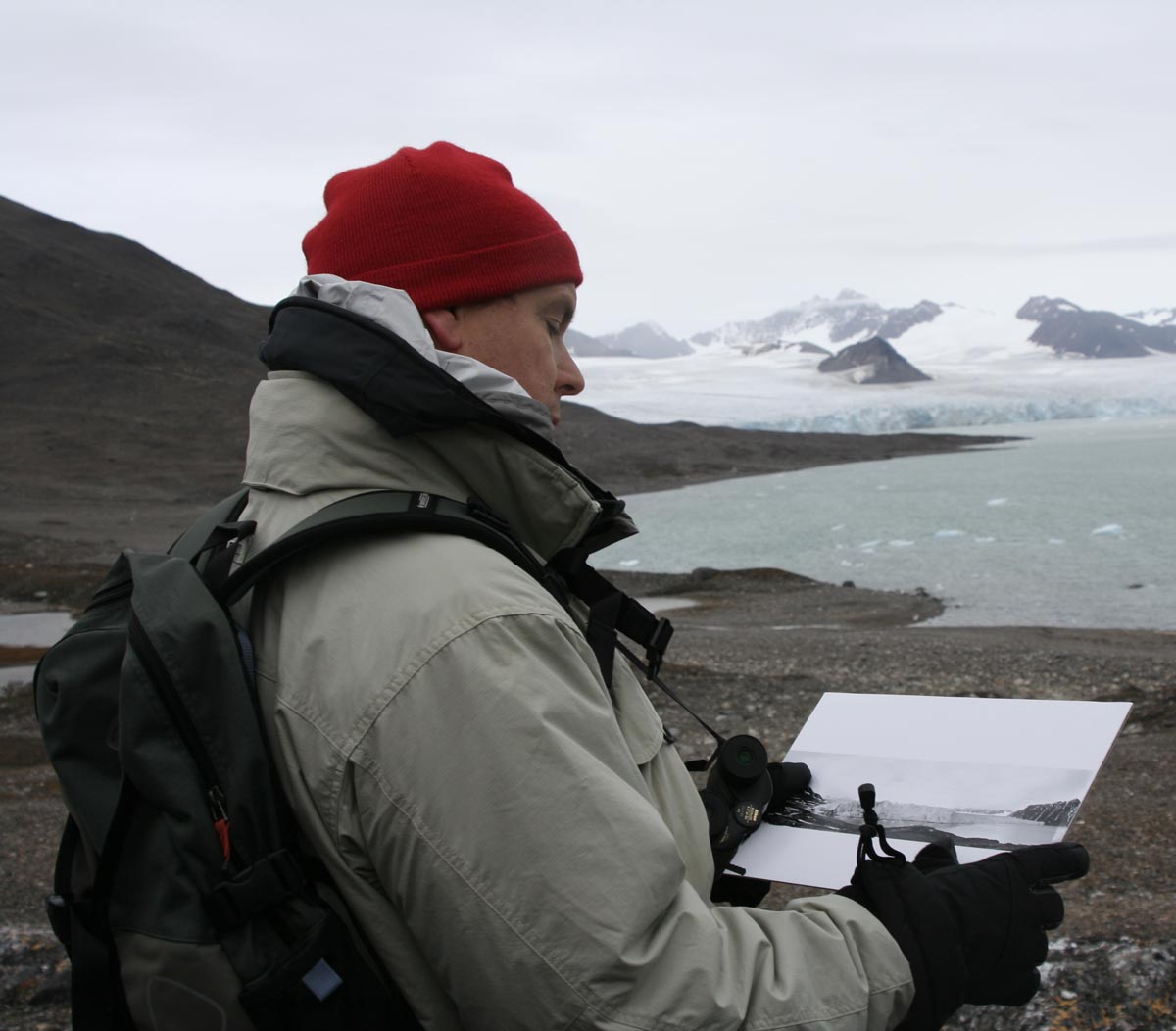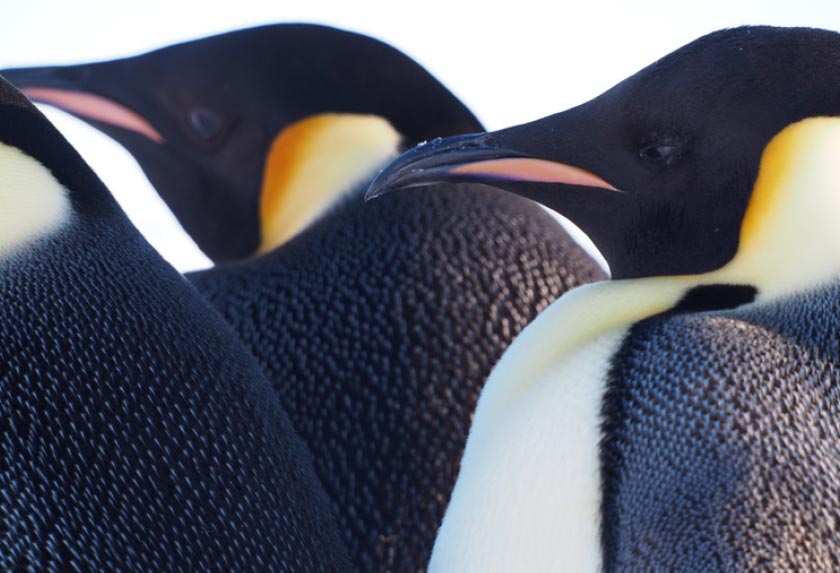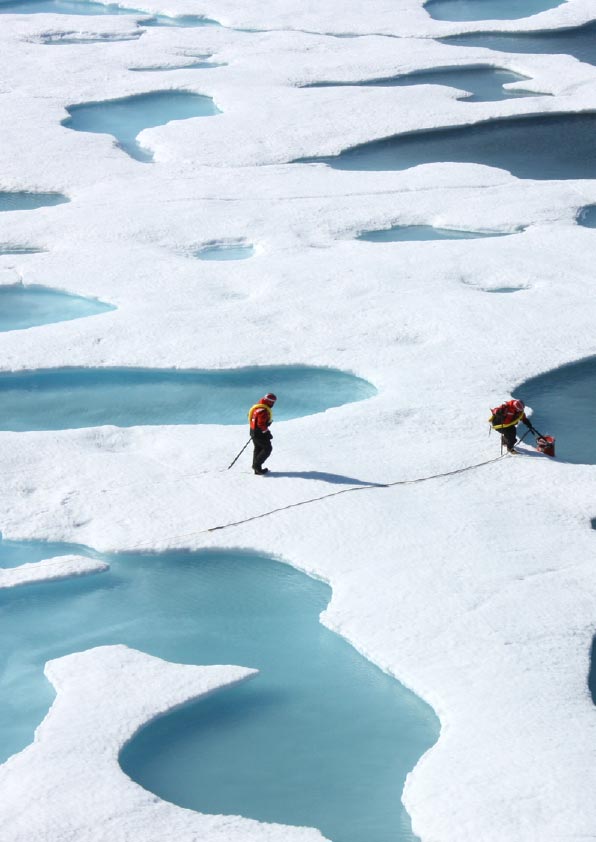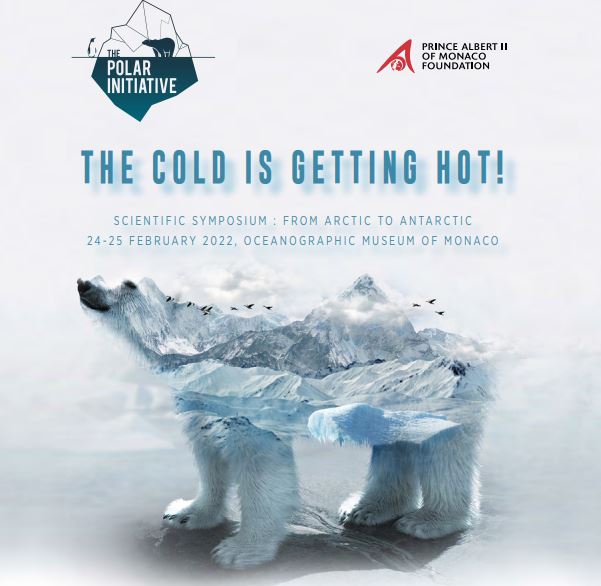Monaco's actions
for the poles
- Home
- Monaco’s actions for the poles
MONACO SUPPORTS THE SPECIAL IPCC REPORT
ON THE OCEAN AND THE CRYOSPHERE


"The polar regions are not areas surrounded by eternal ice, isolated from great planetary changes. They play an unsuspected part in the great upheavals affecting our planet."
HSH Prince Albert II of Monaco
Fuelled by the accounts of His great-great-grandfather, HSH Prince Albert II travelled to the Far North for the first time with His parents and His sisters: a voyage which He Himself qualified as initiatory. He was then 24 years of age. Since then His interest for these extreme territories has never waned. In the footsteps of Prince Albert I,He travelled all over the Svalbard archipelago in 2005. In 2006, he trod the North Pole after a walk of four days, and, three days later, he made a round trip of 17 days, visiting several Antarctic science stations, thus becoming the first head of state to visit both poles.
However, it was only when he compared His great great-grandfather’s photographs on site that the Sovereign Prince became fully aware of the drama being played out in the Arctic. “I was shocked to see that the Lilliehöök Glacier, one of the largest in Spitsbergen, had retreated by several kilometres, despite being at almost 80° N”, He relates. The scientists’ analyses of ice cores showing the impact of the increase in CO2 in the atmosphere only strengthened His decision to act. In 2006, He created his foundation of the same name and gave it three priorities: the management of water resources, the fight against climate change and the protection of biodiversity, notably at the poles. Support for research, the only means of developing action, holds an important place. “It seems to me essential to highlight these regions. The polar lands are not an adventure ground, the domain of scientists or a new tourist destination. They are the laboratory for the future of our planet” He explains.

Convinced that science is the way to progress, Prince Albert I, a great seafarer, carried out 28 oceanographic campaigns between 1885 and 1915. Thanks to his reading, he was particularly fascinated by polar exploration. In 1898 he made a first voyage to the Svalbard Archipelago to the north of Norway. He repeated this voyage three times, visiting Spitsbergen in 1899, 1906 et 1907. The Monacobreen Glacier can still be seen there. His ship the Princesse-Alice II, is considered to have been the finest oceanographic ship of its time. His teams carried out hydrographic surveys, analysed the benthic fauna and the seabed as the equipment on board enabled operations at depths of up to 6,000 m. They also released the first weather balloons to study the atmosphere, an operation which had until then used kites.
Did the Prince imagine that the paintings produced by the artists on board along with the scientists, as well as the many perfectly located photographs, would serve as document database to measure the effects of climate change and notably the spectacular retreat of glaciers?
Science for Action
 Since 2010, the Monaco Scientific Center (CSM), a fully-fledged
multidisciplinary research institute, has increased the strength of its
team with a new department devoted to polar biology. The CSM’s polar
research aims to evaluate the health status of polar ecosystems by long
term electronic and telemetric monitoring, on land and at sea, of the
bio indicator species (sea birds including penguins) of these regions
hard hit by climate disruption and other anthropogenic pressures (e.g.
pollution, fisheries). Beyond the study of the adaptive potentialities
of these species in the face of the changes in their environment, the
goals of this department’s research are to make available results
and tools vital to setting up action plans for the preservation of polar
ecosystems and their biodiversity (for example through the creation of
Marine Protected Areas).
Since 2010, the Monaco Scientific Center (CSM), a fully-fledged
multidisciplinary research institute, has increased the strength of its
team with a new department devoted to polar biology. The CSM’s polar
research aims to evaluate the health status of polar ecosystems by long
term electronic and telemetric monitoring, on land and at sea, of the
bio indicator species (sea birds including penguins) of these regions
hard hit by climate disruption and other anthropogenic pressures (e.g.
pollution, fisheries). Beyond the study of the adaptive potentialities
of these species in the face of the changes in their environment, the
goals of this department’s research are to make available results
and tools vital to setting up action plans for the preservation of polar
ecosystems and their biodiversity (for example through the creation of
Marine Protected Areas). A RESEARCHER AT THE CSM, CÉLINE LE BOHEC REWARDED BY THE ACADÉMIE DES SCIENCES

Among the researcher’s recent discoveries, the work published in the international science journal Nature Climate Change shows that more than 70% of royal penguins, a species which is found principally on the sub Antarctic islands of Crozet, Kerguelen and Marion/Prince-Edwards could be facing drastic choices between now and the end of the century: for some, to adapt, for others, to disappear or migrate further south.
The current warming of the planet is causing the Antarctic Polar Front, a vast larder for fish which separates Antarctic waters from Sub‑Antarctic waters to move further and further away from these islands where royal penguins reproduce. So, in order to feed their chicks, the penguins have to travel greater and greater distances, taking more and more time, which obliges the young to fast for longer and longer periods, to the extent that their survival is at stake.
since the beginning of the 2000s.

What are the capacities for adaptation of penguins (royal, Adelie, emperor, etc.) in the face of changes to their environment due to climate change? Such is the principal challenge facing research being conducted by the Department of Polar Biology at CSM, created in 2010. Work is being pursued on four sites: the sub Antarctic islands of Crozet and Kerguelen, at Pointe‑Géologie in Adelie Land and at Akta Bay in Queen Maud Land on the Antarctic continent. Studies are focusing notably on individual responses of animals, but also to determine how their populations develop in different climate scenarios. To this end, the team is working to develop observation tools which will be minimally intrusive. Many methodological innovations have thus been imagined and used: automatic weighing platforms, permanent or mobile identification systems, video cameras to record the movements of individuals in the colony, on-board sensors…
In partnership with the CNRS and the programmes of the French (IPEV-137) and German (AWI-MARE) polar institutes, almost 17,000 penguins have been monitored continuously since the beginning of the 2000s, thanks to chips implanted under the skin, making possible long term studies. New technologies such as radio- frequency identification (RFID), microloggers (GPS/ARGOS, depth gauges, accelerometers or acoustic…), remotely controlled video cameras or vehicles operating in almost-real time from laboratories, are making it possible to collect vital new data in order to refine the modelling of populations and how they react to global changes.
Action and Mobilisation
Since its creation, the Prince Albert II of Monaco Foundation has made the poles a priority, supporting projects on the ground, information and awareness-raising campaigns and promoting scientific research. In this same spirit it is now launching its polar initiative: a programmatic effort over four years, from 2022-2025, in order to make its involvement in the conservation of polar environments even more proactive.
The initiative is targeting the Foundation’s traditional areas of interest: science, advocacy, the reinforcement of conservation capacity and action. Four lines of work have been retained for these four means of action. On the science side, a symposium has been organised in February 2022 and another will follow in 2024. As to capacities, the polar initiative will enable the scholarship programme of the Scientific Committee on Arctic Research (SCAR) and the International Arctic Science Committee (IASC) to be supplemented.
The aim is to promote synergy between all these different interventions: the immense challenges faced by the poles require a multidisciplinary approach and the support of all stakeholders, including indigenous communities and local actors.


Among the polar projects supported by the Foundation, let us cite the meticulous work being done by the Scott Polar Research Institute (2020-2022) with the intention of establishing a stranding line for the Antarctic ice cap (the limit after which land ice falls into the Ocean, becoming a floating platform). This phenomenon contributes directly to the rising of the sea level. The retreat of this line towards the continent therefore acts as a sensitive signal of ice loss. The aim of this project is to produce a detailed chronological assessment of changes in the stranding line of the entire Antarctic ice cap. Another example: support for the Ice Memory project being carried out by the Fondation Université Grenoble Alpes. will be renewed until 2025. The aim of the project is to create a heritage of ice cores collected on different glaciers throughout the world before they disappear: priceless raw material for the scientists of the future. The ice cores will be stored at the Concordia Polar Station in the Antarctic.
We can also mention the 2013 Tara Arctic expedition, which enabled to collect information about the composition and dynamic of polar marine systems; the work of Birdlife International to prevent the extinction of penguins in several regions of the southern hemisphere, or the Antarctic-Snow project conducted by the CNRS with the intention of describing the variability of the climate and environment in the Eastern Antarctic over the past 1,000 years, thanks to the measurement of water isotopes.
Symposium
« The cold
is getting hot! »
How and at what speed are the changes happening at the poles affecting the planetary climate and life on Earth? Why does this concern each one of us?
These questions are at the heart of the evocatively-titled “The Cold is Getting Hot” symposium. Chaired by HSH Prince Albert II of Monaco, these meetings are organised by the Prince Albert II of Monaco Foundation, in partnership with the Scientific Committee on Antarctic Research (SCAR) and the International Arctic Science Committee (IASC), with the support of the Oceanographic Institute, and in collaboration with the United Nations Decade for Ocean Sciences for Sustainable Development.
The symposium has been held on 24 and 25 February at the Oceanographic Museum of Monaco. Issues such as the melting of Arctic sea ice in summer, permafrost thawing, the melting of the ice cap not only in Greenland but also in the Antarctic – which alone could represent a rise of 3.3 metres in the oceans – will be at the heart of these conversations. The basic purpose of this work is to fuel and guide national and international political decisions by revisiting the essential role of the cryosphere in the climate.
Launched in 2010 by H.S.H. Prince Albert II of Monaco, this platform for discussion jointly organised by His Foundation and the Oceanographic Institute gathers together major decision-makers, scientists, representatives of NGOs and from the private sector in order to address current and future global challenges in ocean management and conservation. The 13th edition (21 March 2022) is centered on three main themes which will be adressed not only in terms of the Ocean generally, but also from the crossed perspective of the Arctic Ocean and the Mediterranean. These two geographically distinct seas share the common characteristic of being relatively closed and surrounded by land. If the Mediterranean Sea is subjected to very strong anthropogenic pressures now, in the long term the Arctic Ocean could follow suit.








